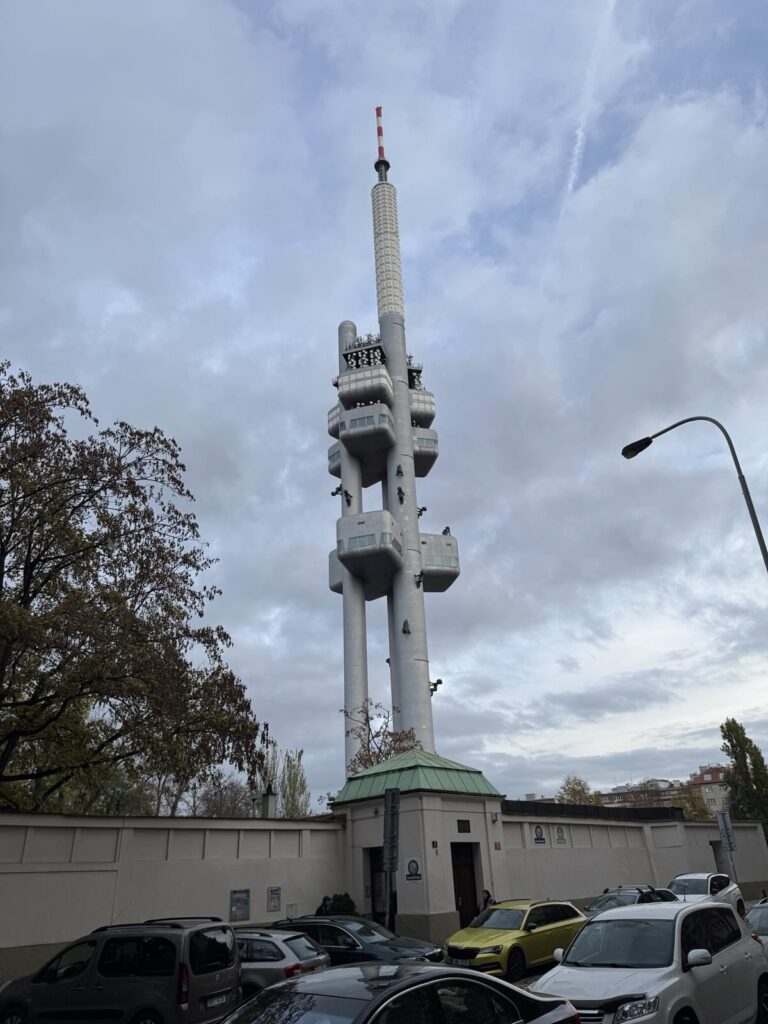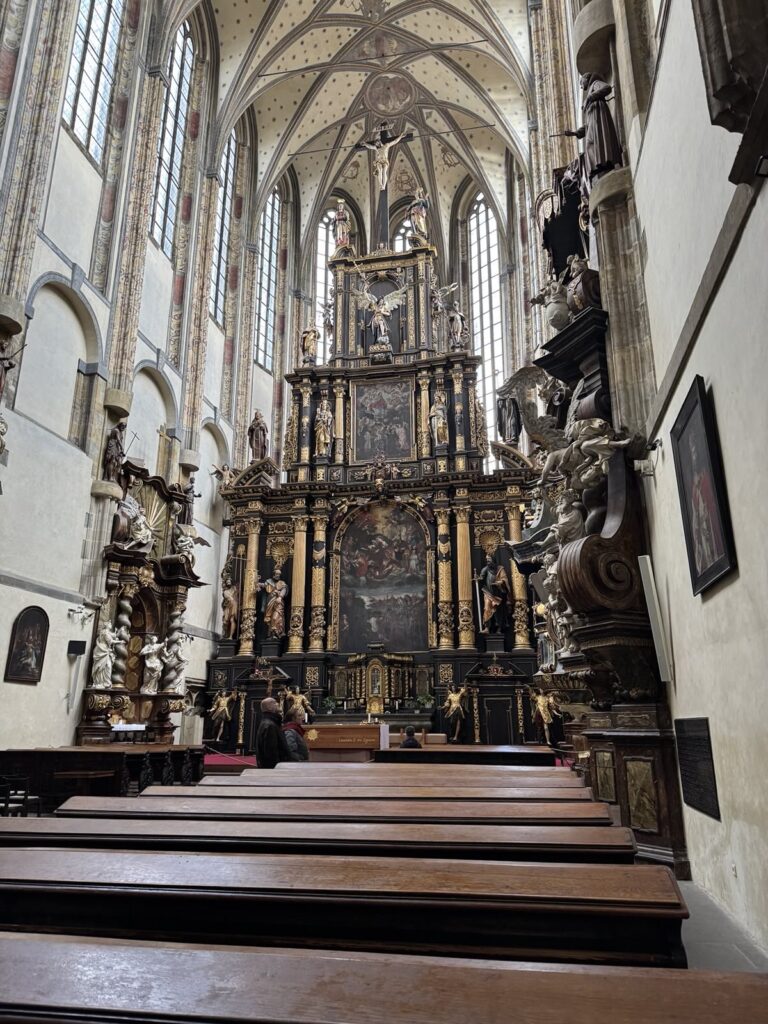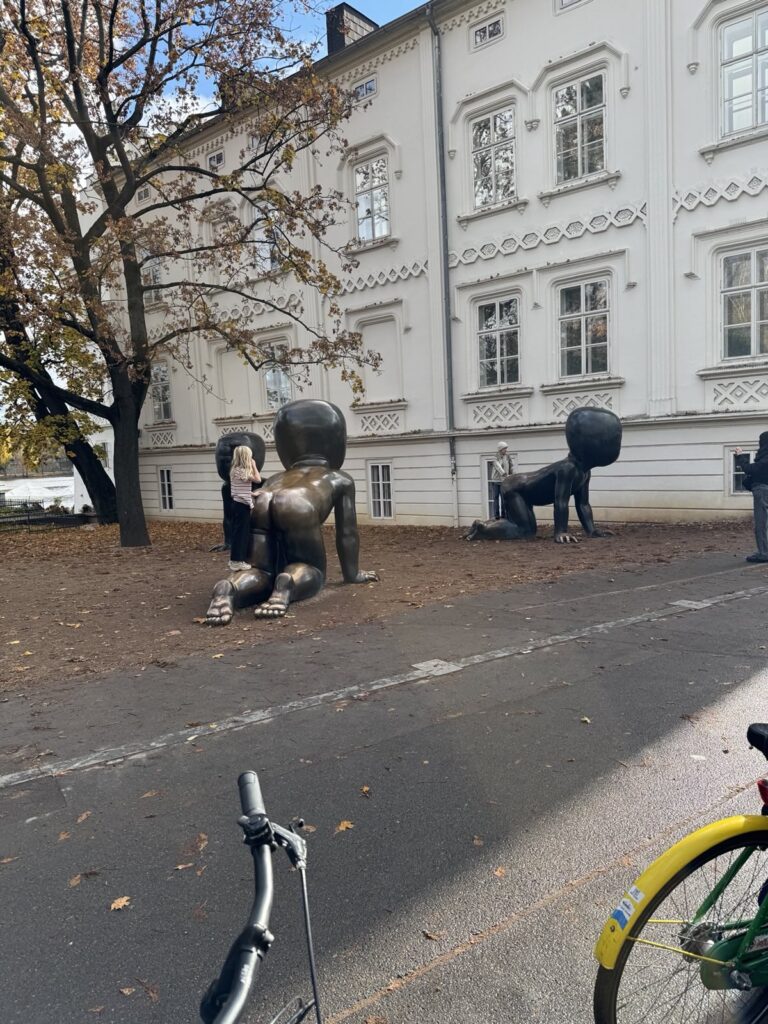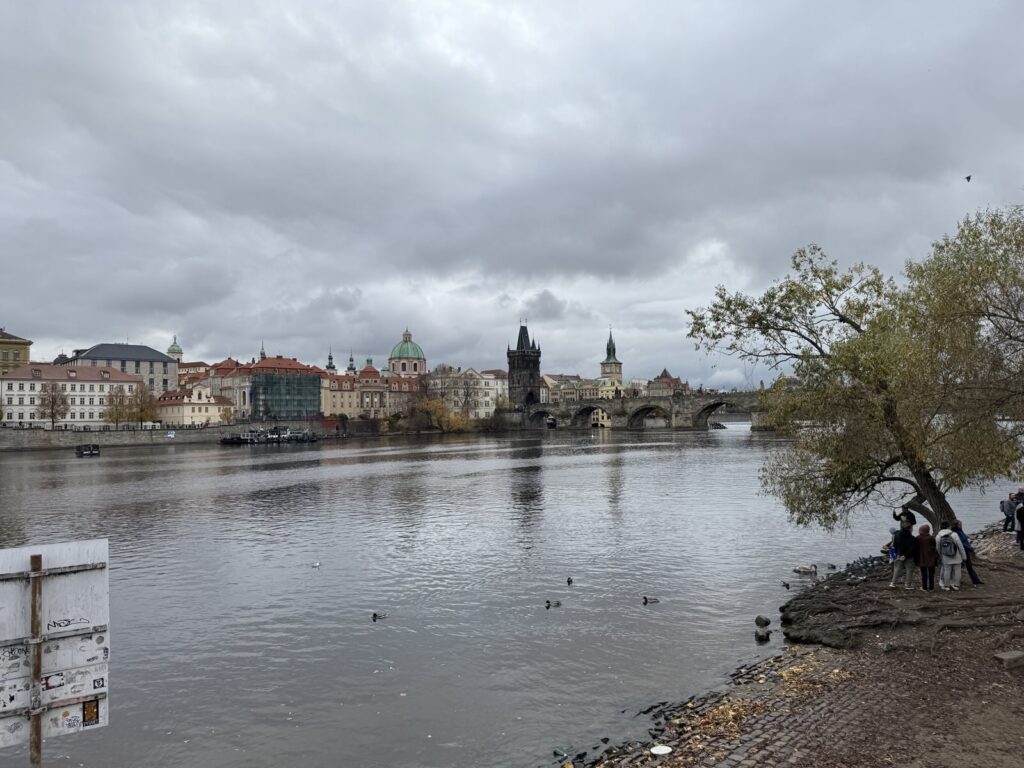
Every so often I get to travel for work. This time I was allowed to go to one of the two RIPE meetings this year. RIPE is the organization that manages IP space called a Regional Internet Registry or RIR, which service region consist of 75 countries mainly in Europe and the Middle East. Since I, together with a colleague, handle the IP space for my employer SURF as the local internet registry (LIR) I got to attend this meeting in Prague.
I really love traveling by train through Europe. It’s still not comparable to flying when it comes to cost or ease of planning, but you can spend your time more efficiently, have better views and can stretch your legs every so often. Not to mention the environmental impact. My favorite website to sort out train travel in Europe is seat61. And this trip they were also invaluable, with recommendations for nice cafe’s to wait in and sorting out which trains to get and were to get my tickets.
For my trip to Prague I used regular trains to travel from Zwolle -> Hengelo -> Bielefeld -> Berlin to eventually Prague. With an hour in Berlin I could grab a bite to eat, which was great. For the way back to the Netherlands I used the European Sleeper, waking up just before Amsterdam for breakfast on board the train. All in all a great experience!
The conference was also very cool with talks about a range of interesting topics. I particularly liked the talk from HEAnet by Anna Wilson about automating their network. It shows how much time and energy it takes to do this and I appreciate the work from our automation and network development departement even more. HEAnet also uses the Workflow Orchestrator SURF developed as a base. You can read more about that on https://workfloworchestrator.org/. You can re-watch Anna’s talk here.
Another talk I really liked was was Trace the Wumpus by Johann Schlamp, you can re-watch his talk here. He recreated a game from 1973 but you need to play it via traceroute commands. He uses the reverseDNS from different IPv6 addresses to create art and in turn levels for the game. It’s amazing how creative some nerds can get. You can start playing the game by opening a terminal and entering the following command (assuming you have an IPv6 address of course):
traceroute6 -f 8 -q 1 wumpus.questA talk by Etienne Khan that was also interesting, was about user installed proxy’s for profit that get used for all sorts of mischief. You can re-watch his talk here. I did not even realize there were companies trying to profit of of residential internet connections, trying to sell themselves as passive income to the unsuspecting internet subscribers. I myself host a number of Tor relays, and those off course get used for mischief as well, but also offer people access to stuff they cant reach by themselves in countries that are oppressed. The proxy’s from this talk were the payed version of that mixed with some extra capitalism and exploitation.
A final talk I would like to mention is the talk by Thomas Daniels comparing the Dutch, Belgian and Irish TLD’s when it came to phishing domains and the different policies that these TLD’s have. You can re-watch it here. The Irish TLD gets almost no abuse, because of the high bar for getting a domain there. You have to prove you have a connection to Ireland and identify yourself in order to buy a domain. While a .nl domain can be bought by anyone. What is preferable? He also had some interesting statistics on what domains get targeted the most by country/TLD and about the countermeasures you could take as a registry for a ccTLD.
The RIPE dinner on Thursday (Halloween) had an amazing location, the courtyard of the main building of the National Museum of Prague. With live music and great food it was a wonderful night at the museum.

After the conference we also did some sightseeing. For Dutch people I can recommend the bike tour by https://mijnpraagtours.nl/. Cycling through the city with a Dutch speaking guide and having nice coffee along the way was a pretty good way to spend a Saturday morning.



Some of the talks about IPv6 have inspired me to try and make parts of my home network IPv6 only by implementing DNS64 and NAT64 on OPNsense . Let’s see what breaks down and what continues working. Maybe that will be a follow up blog. 🙂
